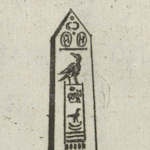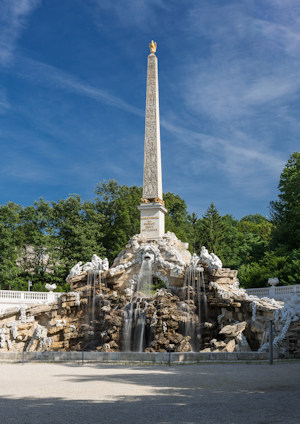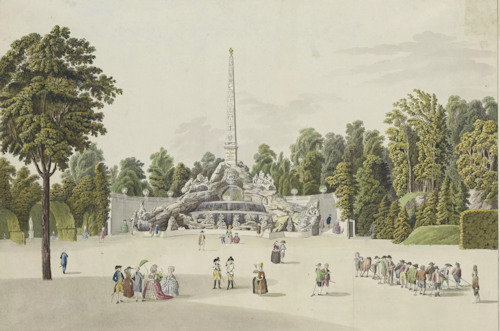
Nothing says strong leadership quite like a large pointy thing reaching to the sky. Welcome to Schönbrunn Palace’s monumental obelisk, resting triumphantly above a fountain ringed by river gods.
- Obelisk dates back to 1777
- Likely a tribute to Habsburg power and authority
- Lovely visual closure to a long avenue of trees leading away from the palace
- Part of the free-to-see park complex
- Book a Schönbrunn concert, tour & more*
- See also:
Obelisk as power statement

(Schloß Schönbrunn, Obeliskbrunnen © Schloß Schönbrunn Kultur- und Betriebsges.m.b.H., Photo: Alexander Eugen Koller)
The large obelisk rests on four golden turtles, the latter a symbol of stability rather than a pithy comment on the speed of Habsburg social reform. A grotto sits beneath, the surrounds supporting statues of river gods and cascades of water that feed a large pool.
The fountain part switches off from mid-October to sometime in April. Otherwise, enjoy the cascades between 11am and 3pm (at the time of writing).
Grottos always conjure up images of furtive meetings and hidden treasures.
So you might wonder if imperial children once escaped their tutors here. Or whether older Habsburgs enjoyed a clandestine (and damp) tête-à-tête away from prying court eyes.

(The waterfall and obelisk by the artist Johann Andreas Ziegler and illustrator Laurenz Janscha, as published by Artaria & Co. Verlag in 1785; Wien Museum Inv.-Nr. 45564; excerpt reproduced with permission under the terms of the CC0 licence)
As with all Schönbrunn’s features, it pays to take a closer look at the detail.
The discoloured stone plants flanking the grotto, for example, look all-too-real.
And one river goddess on the left seems to stare up in puzzlement mixed with dismay. Possibly because her line of sight takes her directly to the naked bottom of a neighbour further up the wall.
Johann Ferdinand Hetzendorf von Hohenberg designed the obelisk and fountain group, which went up in 1777. His name pops up throughout Schönbrunn; he designed, for example, the Roman ruins and the Gloriette.
(Find tickets and experience options for the palace and zoo)
Hetzendorf von Hohenberg also worked on interior architecture. The current inside look of the Augustinerkirche church, for example, owes much to his efforts there in the 1780s.
The complex makes a gorgeous scenic end point to one of the diagonal paths that traverse the Schönbrunn park. Equally, look away from the obelisk to see the very centre of the palace framed by a tree-lined avenue.
If you go off to the left of the large retaining wall, a woodland path takes you up behind should you wish to see everything from the rear.
The power of hieroglyphics

(Proper, albeit unfinished, hieroglyphics on a relief from Thebes ca. 1981–1975 BC. Photo courtesy of the Metropolitan Museum of Art)
It will come as no surprise to learn that all this stonework sought to reinforce and represent the majesty and imperial power of the Habsburgs.
The hieroglyphics on the obelisk itself, for example, allegedly tell a tale of the family dynasty: achievements (perhaps of the ruling Maria Theresa) mapped out in the language of the ancient Egyptians.
Nobody truly understood the meaning of hieroglyphics until the discovery of the Rosetta stone and the work of Jean-François Champollion in the early 1820s.
So the symbols on the obelisk seem unlikely to be entirely authentic in whatever message they hope to convey. But imaginative application of existing patterns from the Ancient World perhaps make them more than random. (All this escapes my expertise, sadly.)
Tip: for some real ancient scripts, pay a visit to the Papyrus Museum or the Ancient Egypt section of the Kunsthistorisches Museum. Find both in the very centre of town.
How to get to the obelisk
First follow the directions for Schönbrunn. Then go to the front of the palace, which faces the hill and gardens.
Look diagonally to your left, and you should see the obelisk at the end of a long avenue.
Alternatively, walk to the Neptune fountain at the end of the gardens and base of the hill. Once there, go down a broad avenue going off to your left (still on level ground, not the path going up the hill). Just keep going to reach the obelisk, passing the Roman ruins on your right as you go.